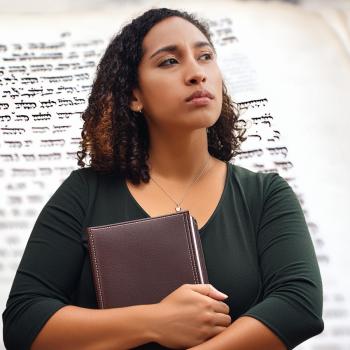Note: this is part of an ongoing series. Mystery Worship One is here; Mystery Worship Two is here; Mystery Worship Three is here. Four is here.
No music and King James Language, mixed with warm welcome and unusual kneeling pads–that was Mystery Worship Five experience in a
nutshell.
That day, May 27, Pentecost Sunday, I attended the 8 am Eucharist at St. John’s Church, Belmont, http://www.stjohnbelmont.org.uk/.
Two reasons for my choice: location–I saw it when riding with my daughter-in-law and realized I could walk there. Two, I needed an early service as the family was planning a 10:00 am departure for a day at the beach.
The building was not particularly old nor of any historical interest, but was built in the classical arched style with the worship center facing east and a large stained glass window above the altar. The pews had narrow, padded, uncomfortable seats. Running along the back and top of each pew was a row of needlepoint kneeling pads, with a metal ring holding each one to a nail. The needlepoint pads had probably been done by members of the congregation, and I found them touching and meaningful.
I walked in about eight minutes early and was immediately greeted by a lovely woman who offered me either a simplified booklet with the liturgy or the more complex Book of Common Prayer. I took the booklet, knowing my knowledge of the Book of Common Prayer would be inadequate to follow the service properly and to give timely responses.
I seated myself on the lectern side of the church (right side, facing the altar), six rows from the front. The worship center could easily hold about 250 people, and there were 15-20 in attendance that morning.
I was a little surprised to find no musical accompaniment to this service, neither organ nor voice, but also found the service flowed well without them.
Throughout the service, the language and rhythms of the King James Bible predominated, as they used the liturgy from the 1892 Book of Common Prayer. Thsi service correspondes closely with the one in The United Methodist Hymnal, A Service of Word and Table IV, that begins, “Ye that do truly and earnestly repent of your sins, and are in love and charity with your neighbors, and intend to lead a new life, following the commandments of God, and walking from henceforth in his holy ways: Draw near with faith . . .”
The Vicar, The Revd. Mark Williams, and the Curate, The Revd. Anne Doerr, wore white albs. The Vicar had a simple red chasuble over his alb and the Curate, a red stole tied to her side.
The Scriptures for the day were taken from the Revised Common Lectionary: Ezekiel 37, Acts 2, John 15. When the Vicar read the Scriptures, King James Version,, he did not give a page number nor did he appear to have any expectation that the congregation would read along.
The Curate offered the message. She had problems with her microphone, which the Vicar quickly fixed–but he went to the back of the worship center to do so. No one seemed perturbed by this.
Revd Doerr spoke from both Ezekiel 37 and Acts 2. She offered what I have called a “fire hose” message–pouring so much information out that it was hard, if not impossible, to keep it all straight. She began by explaining what the word “pentecost” means and how it fit in the Jewish celebrations. She asked, “Who is the Holy Spirit?” and acknowledged that the traditional language of “Holy Ghost” was problematic, reminding us that Jesus referred to the Holy Spirit as the Paraclete, the one coming alongside. She said, “The presence of Jesus is the absence of Jesus” and then did survey of the entire Old Testament and the appearances of the Holy Spirit there.
I have taught preaching before, and I thought, “She’s really new at this. She’s so terrified of running out of material that she’s putting her whole seminary education in one sermon.”
Now, I might be wrong about her newness, but that is a normal pattern for someone who has not had much experience in the pulpit. I was certainly able to follow her as I’ve got the background, but behind me was a young boy, his very first time in church, and I heard him growing more and more restless as the words became more and more incomprehensible.
After the message, she and the Vicar approached the altar and prepared the table for Holy Communion, inviting everyone who regularly received to participate in this sacrament.
After cleaning the altar, the Vicar pronounced the blessing, then he and the curate came down side aisles. I assumed the service was over, but most people just sat there. Had there been music, we would have waited, seated, for the postlude to be completed before leaving. Here, we just sat until someone finally arose. I then stood and made my way to the back where I had a lovely conversation with the Vicar.
I didn’t get to meet the Curate, as she was tied up talking with several others. The Vicar is an ordained Anglican priest and the congregation is 90% Anglican. When the local Methodist church (which had been meeting in their building for several years anyway because of the state of disrepair of their own building) decided to merge, the Methodist Church here in England received him as a Methodist pastor, although he rarely preaches on the larger circuit.
Our conversation was most enjoyable. I did learn that they have a daily service of morning prayer at 9 am. and I hope to join them at that during my stay here as they are also near a train station and I can then just hop the train to London for continuing research there.
It was a quiet, gentle way to start the day. And nearly impossible for the average person coming in off the street to understand–should that ever happen.












